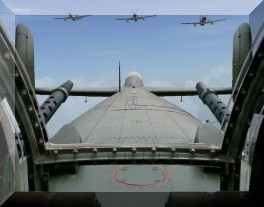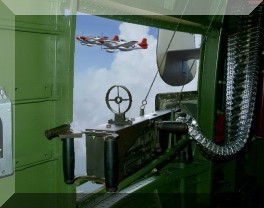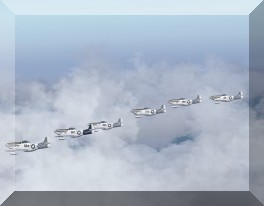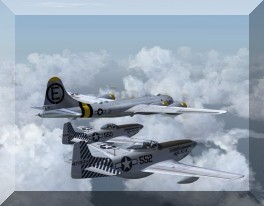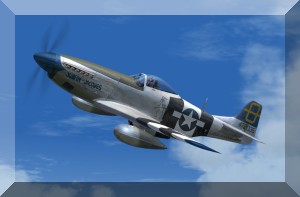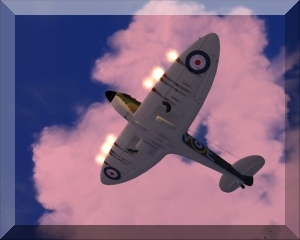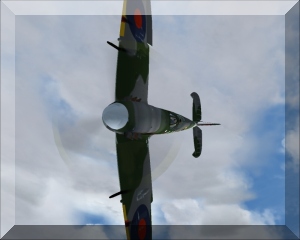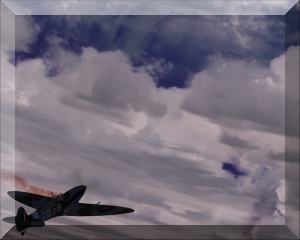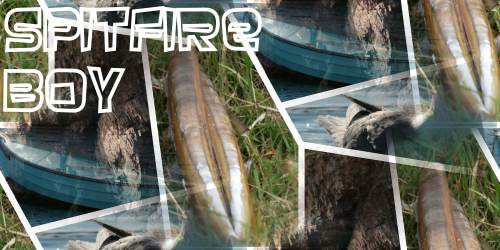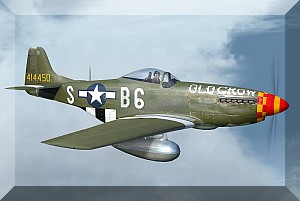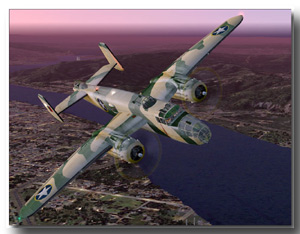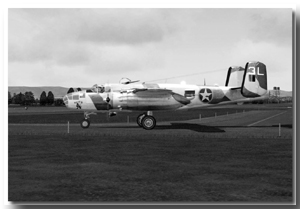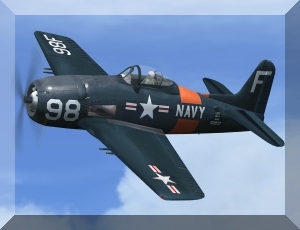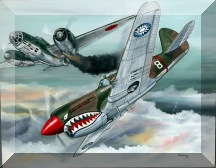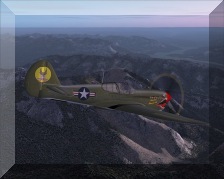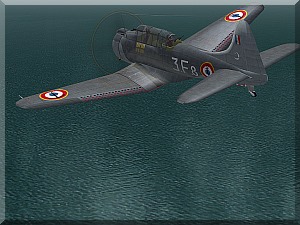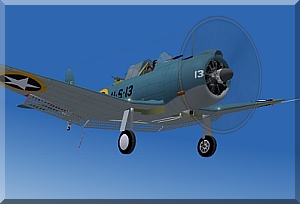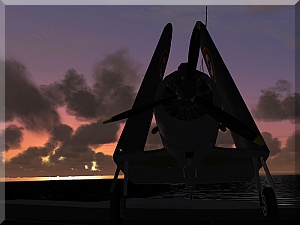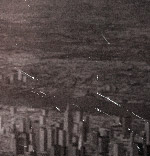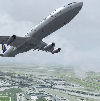Douglas SBD Dauntless
Design and DevelopmentThe SBD Dauntless was a naval dive bomber made by Douglas during World War II. The Northrop BT-1 provided the basis for the SBD, which began manufacture in 1940. It was designed with a 1,000 horsepower Wright Cyclone powerplant. A year earlier, both the U.S. Navy and Marine Corps had placed orders for the new dive bombers, aptly designated the SBD-1 and SBD-2 (the latter had increased fuel capacity and different armament). The former went to the Marine Corps in late 1940, and the latter went to the Navy in early 1941. Later variations included the SBD-3, SBD-4, SBD-4P, SBD-5 (the most produced variant) and finally the SBD-6. The U.S. Army had its own version of the SBD, known as the A-24 Banshee, it was the same aircraft except it came it came without the tail hook used for carrier landings, and a pneumatic line replaced the solid tail wheel on some of them. The version shown here is the SBD-2 variant in Aeronavale markings.
Operational HistoryThe Douglas SBD Dauntless was the U.S. Navy's main dive bomber from mid-1940 until late 1943, when it was supplanted (although not entirely replaced) by the SB2C Helldiver. The SBD was involved in combat from the first day of the Pacific War, as Dauntlesses arriving at Hawaii from USS Enterprise were caught in the Pearl Harbor attack. The type's first major use was in the Battle of the Coral Sea, when SBDs and TBDs sank the Japanese aircraft carrier Sh[ch333]h[ch333]. SBDs were also used as anti-torpedo combat air patrol and scored several times against Japanese aircraft trying to attack USS Lexington and USS Yorktown.
However, the SBD's most important contribution to the American war effort probably came during the Battle of Midway (early June 1942), when SBD dive bomber attacks sank all four of the Japanese aircraft carriers (the Akagi, Kaga, S[ch333]ry[ch363], and Hiry[ch363]) as well as heavily damaging two Japanese cruisers (including the Mikuma, which sank before a Japanese destroyer could scuttle it).
Next, SBDs participated in the Guadalcanal campaign, both from American carriers and Henderson Field on Guadalcanal Island. Dauntlesses contributed to the heavy loss of Japanese shipping during the campaign, including the carrier Ry[ch363]j[ch333] near the Solomon Islands on 24 August, damaging three others during the six-month campaign. SBDs proceeded to sink one cruiser and nine transports during the decisive Naval Battle of Guadalcanal.
The SBD was used until 1944 when the Dauntless undertook its last major action during the Battle of the Philippine Sea. The Dauntless was one of the most important aircraft in the Pacific Theatre of World War II, sinking more enemy shipping in the Pacific war than any other US or Allied aircraft. In addition, Barrett Tilman, in his book on the Dauntless, claims that the Dauntless has a "plus" score against enemy aircraft, a rare event for a nominal "bomber" indeed.
5,936 SBDs were produced in World War II.





